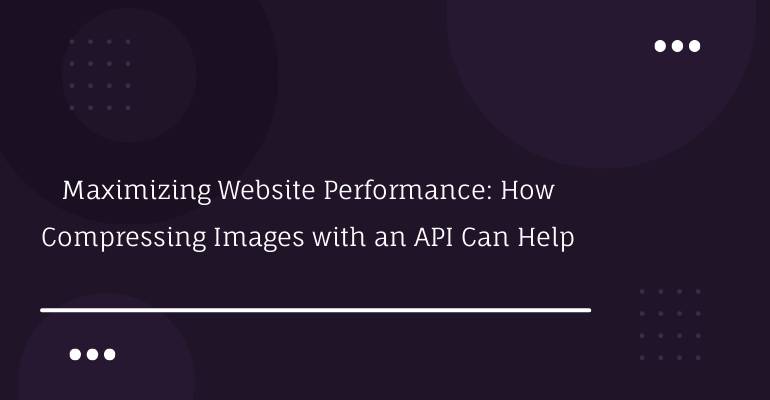Maximizing Website Performance: How Compressing Images with an API Can Help
In today's fast-paced digital world, website performance can make or break user experience and business success. Slow-loading websites not only frustrate visitors but also have a negative impact on search engine rankings and conversions. One major factor that affects website speed is the size of images used on the site. Images are crucial for engaging users and conveying information, but they can also be resource-intensive and slow down the site. Fortunately, there's a solution: compressing images with an API.
What is an image compression API?
An image compression API is a tool that enables developers to automatically optimize and reduce the size of images on their websites. Unlike manual image compression, which can be time-consuming and error-prone, using an API allows for faster and more consistent results. With an image compression API, you can upload your images to a server, where they are analyzed and optimized using various algorithms that preserve image quality while reducing file size. The compressed images are then returned to your website, ready to be displayed to users.
How can image compression API help website performance?
By reducing the size of images, an image compression API can significantly improve website performance. Smaller image files mean faster loading times, which in turn lead to lower bounce rates, longer session durations, and higher conversion rates. Moreover, faster loading times can boost your website's search engine optimization (SEO) by improving your site's page speed score, a ranking factor used by Google and other search engines. Additionally, compressed images take up less storage space on your server, which can reduce hosting costs and make your site more scalable.
How to use an image compression API for your website?
Using an image compression API is relatively easy, even if you don't have much technical experience. Many image compression APIs offer simple and intuitive interfaces, as well as documentation and tutorials that guide you through the process. Some popular image compression APIs include Picnie, TinyPNG, Kraken.io, and Cloudinary. To get started, you'll need to sign up for an account and obtain an API key, which you can use to authenticate your requests. Then, you can either integrate the API directly into your website's code or use a plugin or extension that automates the compression process.
Conclusion
In summary, image compression with an API is a simple and effective way to maximize website performance. By reducing the size of images, you can improve loading times, user experience, and SEO, as well as reduce hosting costs and scale your site. If you haven't already, consider using an image compression API for your website and see the difference it can make.






